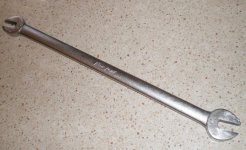GTP1960
Jedi Knight
Offline
My handbrake does not hold adequately .
I must be misunderstanding the workshop manual, or at least overlooking something.
It reads :
"on no account should alteration be made to the handbrake cable for this purpose."
Surly there is a way to adjust and tighten the handbrake.
any help appreciated.
thanks and best regards,
Guy
I must be misunderstanding the workshop manual, or at least overlooking something.
It reads :
"on no account should alteration be made to the handbrake cable for this purpose."
Surly there is a way to adjust and tighten the handbrake.
any help appreciated.
thanks and best regards,
Guy

 Hi Guest!
Hi Guest!

 smilie in place of the real @
smilie in place of the real @
 Pretty Please - add it to our Events forum(s) and add to the calendar! >>
Pretty Please - add it to our Events forum(s) and add to the calendar! >> 
